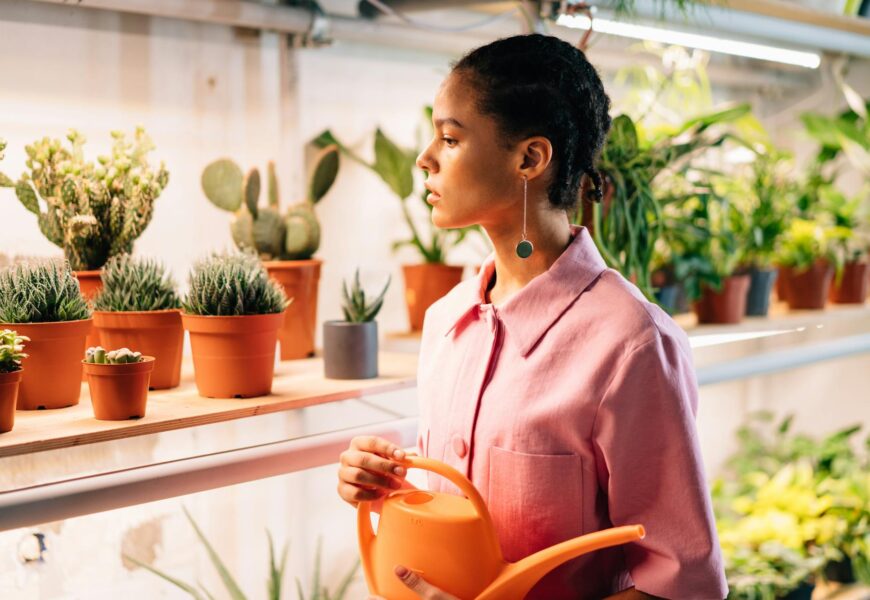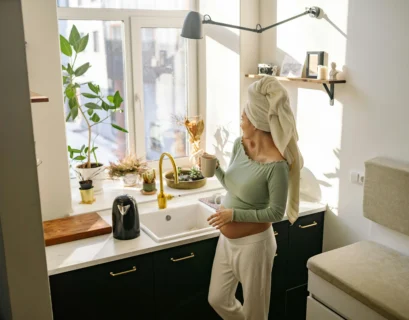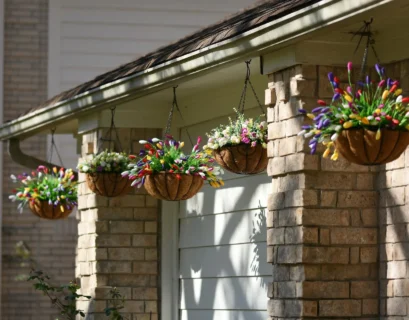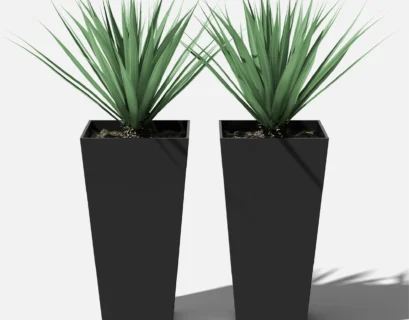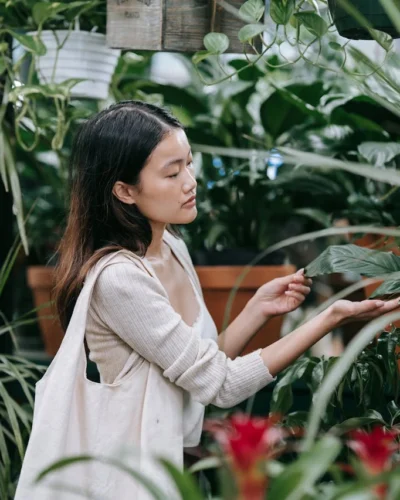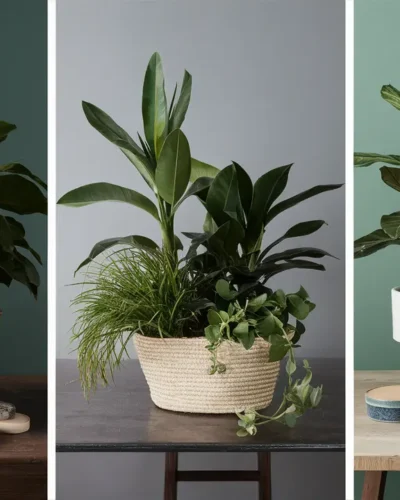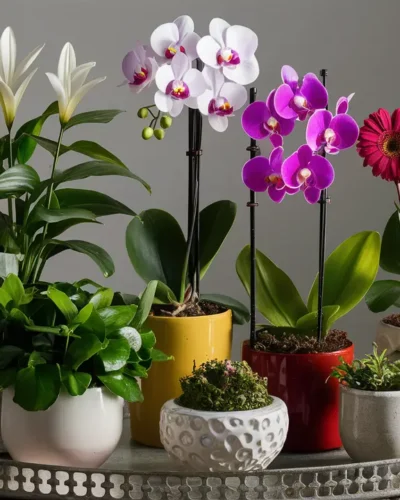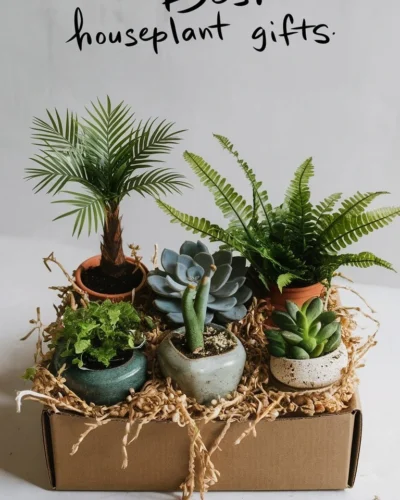To cultivate vibrant greenery indoors, finding the ideal planter is crucial. Self-watering planters are lauded as a solution for busy plant owners, challenging traditional pots. But how do they compare in reality?
Unveiling Options: Self-Watering vs. Traditional Pots
Self-Watering Planters: The Game-Changers
Self-watering planters, the darlings of modern indoor gardening, offer a promising solution to the perennial problem of plant care neglect. With their ingenious design, these planters provide a reservoir that allows plants to draw water as needed, mimicking nature’s own hydration cycle. Our comprehensive guide, The Ultimate Guide to Self-Watering Planters, delves deep into the intricacies of these marvels, equipping you with the knowledge to embark on your self-watering journey with confidence.
Pros:

- Convenience: Bid farewell to the chore of daily watering rituals. Self-watering planters grant you the freedom to indulge in your busy schedule without fretting over parched plants.
- Water Efficiency: By delivering water directly to the roots as required, these planters minimize water wastage, making them an eco-conscious choice.
- Plant Health: Say hello to healthier, happier plants! Consistent moisture levels provided by self-watering systems foster robust growth and reduce the risk of over or under-watering mishaps.
Cons:
- Initial Investment: While they promise long-term benefits, self-watering planters often come with a heftier price tag compared to traditional pots. However, their durability and efficiency may justify the upfront cost.
- Maintenance Requirements: Despite their self-sufficient facade, these planters still require periodic maintenance to ensure optimal functionality. Regular cleaning and occasional refilling of the reservoir are essential tasks to uphold their efficacy.
Traditional Pots: Time-Honored Classics
Ah, the humble traditional pot – a timeless staple in the realm of indoor gardening. These tried-and-tested vessels have stood the test of time, offering a straightforward approach to plant care that appeals to purists and DIY enthusiasts alike. But before you dismiss them in favor of their self-watering counterparts, let’s explore their merits and limitations.
Pros:
- Affordability: Traditional pots, with their simple construction, are often more budget-friendly options compared to their high-tech counterparts. For thrifty gardeners or those with a penchant for DIY projects, this accessibility is a major draw.
- Customization: From terracotta to ceramic, traditional pots come in a myriad of materials and designs, allowing you to express your personal style and complement your home decor effortlessly.
- Control: With traditional pots, you’re in the driver’s seat when it comes to watering frequency and volume. This hands-on approach appeals to seasoned gardeners who relish the tactile experience of nurturing their plants.
Cons:
- Watering Demands: The Achilles’ heel of traditional pots lies in their reliance on manual watering. For forgetful or time-strapped individuals, maintaining a consistent watering schedule can prove challenging, leading to potential plant stress or demise.
- Overwatering Risk: Without the safety net of a self-regulating system, novice plant parents may fall prey to the common pitfall of overwatering, which can spell doom for moisture-sensitive plants.
Navigating Your Plant Parenthood Journey
As you weigh the merits of self-watering planters against traditional pots, it’s crucial to consider factors such as your lifestyle, plant preferences, and level of gardening expertise. Are you a jet-setting traveler in need of low-maintenance solutions? Our guide on Self-Watering Planters for Travel Lovers offers invaluable insights tailored to your nomadic lifestyle. Alternatively, if you’re a green-thumbed purist who revels in hands-on plant care, our article on The Easy Guide to Self-Watering Houseplants can help you strike the perfect balance between convenience and control.
Making an Informed Decision: Self-Watering Planters vs. Traditional Pots
Now that we’ve explored the nuances of self-watering planters and traditional pots, it’s time to delve deeper into the factors that should inform your decision-making process. Whether you’re a novice green thumb or a seasoned plant aficionado, understanding the intricacies of each option will empower you to create an indoor oasis that thrives with vitality and beauty.
Assessing Your Needs and Lifestyle
Before you embark on your quest for the ideal planter, take a moment to reflect on your unique circumstances and preferences. Are you a busy professional juggling a hectic schedule, or do you have ample time to devote to plant care? Do you prioritize convenience and efficiency, or do you relish the hands-on experience of tending to your green companions?
If convenience reigns supreme in your world, self-watering planters emerge as the frontrunners in your quest for hassle-free plant parenthood. Our article on Self-Watering Planters for Busy People (or Plant Killers!) offers tailored advice to help you strike the perfect balance between your bustling lifestyle and your desire for verdant surroundings.
Understanding Your Plant’s Needs
Just as every individual has unique requirements, so too do plants possess distinct preferences and care requirements. Some thrive in arid conditions with minimal moisture, while others demand a constant supply of hydration to flourish. By familiarizing yourself with the specific needs of your green companions, you can tailor your choice of planter to provide optimal growing conditions.
Our comprehensive guide on Thrive Indoors: The Ultimate Guide to Choosing Long-Lasting Houseplants equips you with the knowledge to select plants that align with your lifestyle and environment. Armed with this information, you can make informed decisions about whether self-watering planters or traditional pots are better suited to meet your plant’s unique requirements.
Weighing the Environmental Impact
In an age where sustainability is paramount, conscientious consumers are increasingly scrutinizing the eco-friendliness of their purchasing decisions. When evaluating the environmental impact of self-watering planters versus traditional pots, several factors come into play.
While self-watering planters boast water-saving benefits and reduce the risk of water runoff and soil erosion, their production often entails the use of plastics and other non-biodegradable materials. On the other hand, traditional pots crafted from natural materials such as clay or ceramic may offer a more environmentally friendly alternative, albeit with greater water consumption and maintenance requirements.
Our thought-provoking exploration of Self-Watering Planters: Eco-Friendly or Not? delves into the nuances of this debate, empowering you to make eco-conscious choices that align with your values and principles.
Embracing the Journey
In the realm of indoor gardening, the journey is just as enriching as the destination. Whether you opt for the futuristic allure of self-watering planters or the timeless charm of traditional pots, each choice presents an opportunity for growth, discovery, and connection with nature.
As you embark on your DIY self-watering planter project, remember that there’s no one-size-fits-all solution. Embrace experimentation, learn from your successes and setbacks, and revel in the joy of nurturing thriving greenery within your home.
With our array of resources and guides, including Houseplant Parenthood Made Easy: 10 Tips for Beginners to Thrive and Top Light Plants for Busy Homes, you’ll find all the inspiration and support you need to embark on your indoor gardening journey with confidence and enthusiasm.

